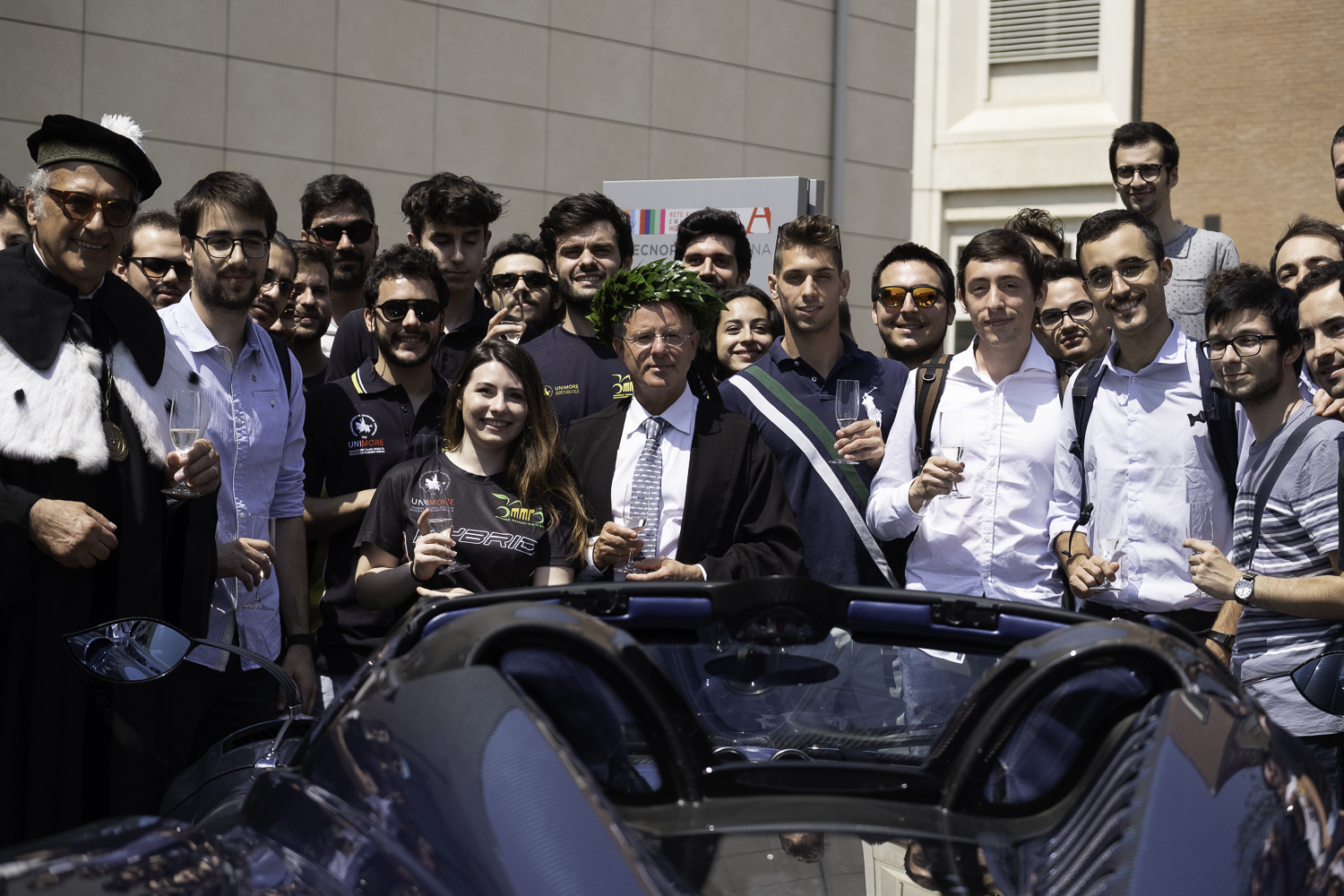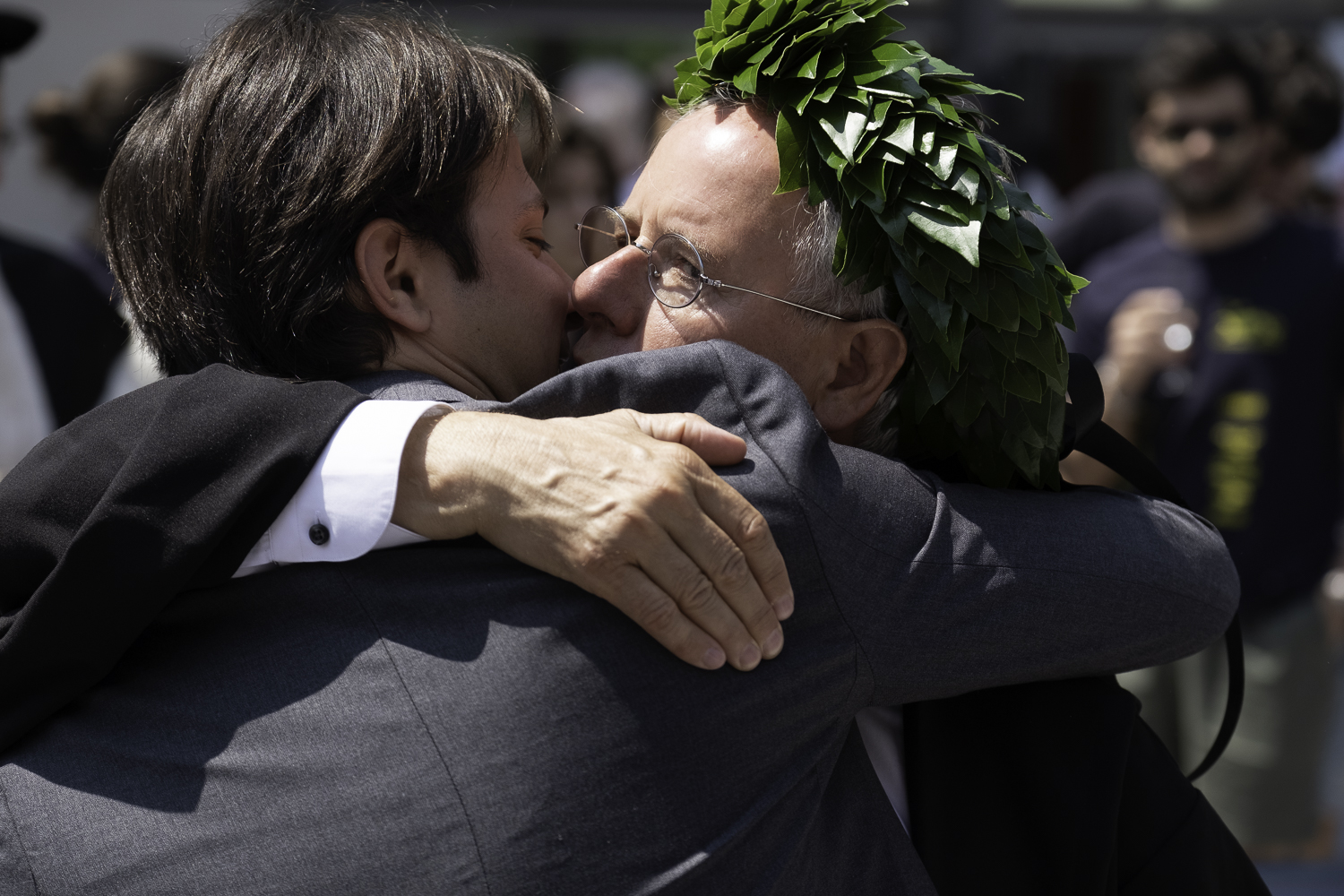Pagani Automobili announces the Honoris Causa Degree in Vehicle Engineering to Horacio Pagani
Pagani Automobili announces the Honoris Causa Degree in Vehicle Engineering to Horacio Pagani
Pagani Automobili is pleased to announce the awarding of the Honoris Causa Master Degree to its Founder and Chief Designer Horacio Pagani.
After almost 20 years since the world debut of the iconic Zonda C12, the Atelier of San Cesario Sul Panaro is preparing to celebrate another key achievement gained by its Founder, the fruit of a long study and a great deal of teamwork.
The ceremony has taken place on June 19th at the “Enzo Ferrari” Faculty of Engineering of the University of Modena and Reggio Emilia.
With the conferral of the honorary degree in Vehicle Engineering, the Emilian Atheneum did want to pay homage to the Argentine designer, the person who decided to link his name, and his professional and technological achievements to the Modenese territory, cradle and heart of what is today known as Motorvalley.
The celebration was held at the Modena Tecnopolo and was introduced by the Academic Procession, in the person of the Rector, Professor Angelo O. Andrisano, who first stated that the event was precisely taking place 30 years after the passing of Enzo Ferrari: “A man in the myth, who brought the name of Modena over the globe, whose name now is the name of our Department of Engineering. And it is not that difficult to find similarities between the story of Horacio Pagani and Enzo’s, who both achieved excellence, who both were driven by passion and perseverance.” The University Rector has also recalled the regal decree stating the value of the Honorary Degree which can only be awarded to “People who, due to their works or publications, gained fame for the profound expertise achieved in the subjects for which the Honoris Causa Degree is conceded”.
Rector’s greetings were followed by the speech of the Engineering Faculty Dean, Professor Alessandro Capra, who underlined the motivations of the award: “The prestigious career in designing and producing world-class supercars, the significant propensity to continuous research in engineering, in particular in composite materials, and the extraordinary economic and international positive impact are all elements that confirm the excellence of Horacio Pagani’s contribution.”
The Laudatio held by Professor Francesco Leali highlighted Horacio’s life and career key aspects, depicting a vivid visionary, a designer, and a producer, finding similarities with modern days students who are following his example by leaving the “virtual comforts” in order to create a project with their hands, something more uncomfortable but “fulfilling from an engineering point of view”.
A technician whose merits go far beyond mechanical engineering and composite material technology, of which he has been a visionary pioneer, inspired by that Reinassance concept fully developed in Leonardo Da Vinci’s thoughts and works, that he kept maniacally studying and loving.”
Thus Professor Leali announces Horacio Pagani’s Lectio Magistralis which, while reminding the stages of the long career, does not shrink from observing the profound love for those who have been supporting him along the way. The childhood friends, the family in Argentina, his beloved wife Cristina and sons Leonardo and Christopher; and more the colleagues of Lamborghini, among them Maurizio Ferrari, the partners Daimler and Mercedes-Benz, Bosch, and those who believed in the Zonda project and provided support for the launch of this revolutionary work. Then he thanked the Pagani Team, all the colleagues who share today his same passion, and finally the city of Modena, the place where the young designer long dreamt to come to because of its real automotive culture. “To me, reading the few magazines available in Argentina and seeing those beautiful cars, feeling that kind of connection to Italy, to the Italian design…that was something that made me dream and imagine… Probably that imagination went even far beyond reality.” These are Horacio Pagani’s words describing the birth of his dream, the desire to come closer to the land that today is awarding him Honoris Causa Degree in Vehicle Engineering.
Thanks to those magazines he will meet Leonardo Da Vinci, according to whom art and science can coexist peacefully, “walking hand in hand”.
From that time on he will turn this vision into the philosophy of each project and creation: “This vision allowed me to clearly feel the sensation, or better the need, to give an aesthetic purpose to objects, elements which normally have a merely function exclusively.” Each calculation, formula, geometry has to be bended to formal beauty and physical appearance: in this spirit projects like the Zonda and Huayra will come to life, where the attention to detail is evident in each carbon fiber panel and the interweaving of warp and weft becomes a claim to fame, a peculiarity to show on display.
An ode to tailored and sartorial works, to craftsmanship, together with the triumph of composite technologies, profoundly studied and developed in the Atelier of San Cesario Sul Panaro.
Key themes of the Lectio Magistralis have been teamwork and partnership with esteemed players, and a few important suggestions to younger generations: “When we come up against new obstacles we cannot give up: the obstacle is there for a reason. It is a source of energy! We only have to figure out how to climb it over.”




